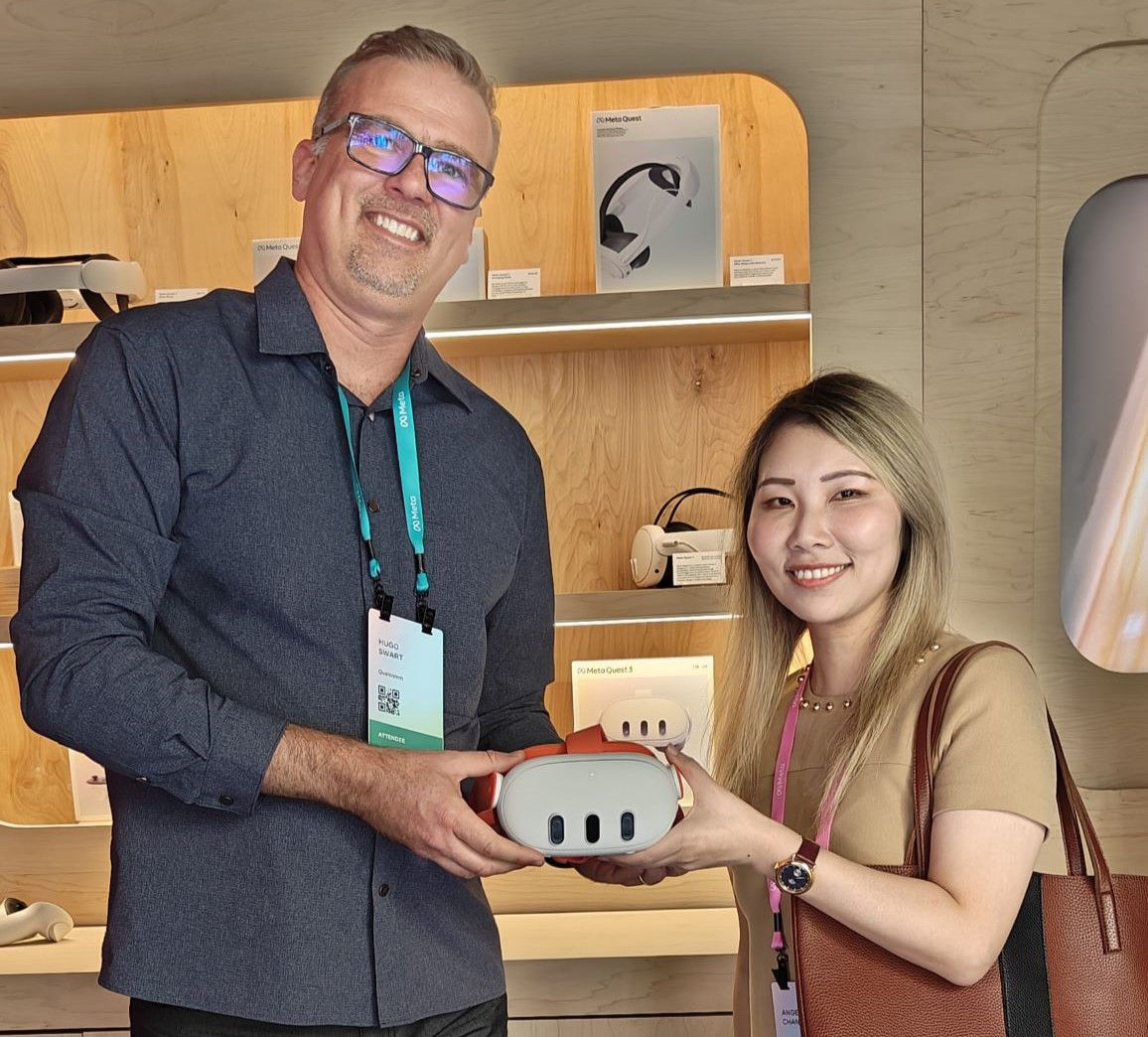This blog post was originally published at Qualcomm’s website. It is reprinted here with the permission of Qualcomm.
New Snapdragon XR processors power Meta Quest 3 and the Ray-Ban Meta smart glasses collection to revolutionize your reality
Qualcomm Technologies and Meta have a long history of driving innovation in the extended reality (XR) industry. Our XR collaboration goes back to Oculus Go, the first meaningful standalone virtual reality (VR) headset for consumers. Since then, Snapdragon XR platforms have powered multiple generations of Quest devices. For more than seven years, our engineering teams have worked closely together to continue delivering best in class virtual reality, mixed reality and smart glasses experiences in the journey to the next era of computing.
I am excited this long-term collaboration once again has resulted in two new Snapdragon XR processors powering Meta Quest 3, the most powerful Meta Quest headset yet, and the Ray-Ban Meta smart glasses collection, the next-generation smart glasses from Meta and Essilor Luxottica.
The Snapdragon XR2 Gen 2 powers Meta Quest 3, the first MR headset to bring high-quality mixed reality to a wider audience
We are thrilled that our latest Snapdragon XR2 Gen 2 platform will be launching first in Meta Quest 3. The Snapdragon XR2 Gen 2 is the first mixed and virtual reality platform built from the ground up working closely together with Meta. It is our most advanced XR platform yet — purpose built for breathtaking mixed reality (MR) experiences that blend the physical and virtual world seamlessly. This has been a long journey. When we started defining the platform back in 2019, our teams aligned on the vision: create a platform that would power a great product for everyone to access. From there, we worked hand in hand to derive the specs and performance targets.
Vice President of VR at Meta Mark Rabkin said:
I am thrilled to continue collaborating with Qualcomm Technologies’ teams, who share our vision of deep ecosystem integration to build high-quality, mainstream mixed reality devices. With Quest 3, the Snapdragon XR2 Gen 2 enabled us to build a sleeker headset with breakthrough graphic performance powering complex mixed reality experiences, all at an approachable price point.
One of the key areas we decided to focus on was graphics: to enable amazing MR and VR experiences, our new platform’s graphics processing unit (GPU) needed to be more robust and power efficient. The Snapdragon XR2 Gen 2 now features more than double* the GPU performance for amazing visuals and supports dynamic foveated rendering, game super resolution and space warp, for developers to push the limits of performance.
Another area our teams worked on was the ability to make Meta Quest 3 more capable of understanding the environment around a user, so that virtual experiences can interact with physical spaces. We packed the Snapdragon XR2 Gen 2 with cutting edge on-device AI that is eight times more performant* and ultra-low latency passthrough for smoother and more natural interactions, all in a single chip architecture. This enabled Meta to build a slimmer and more comfortable headset that doesn’t require an external battery pack and enables the freedom for users to interact with their virtual and physical space seamlessly.
Angela Chang, Senior Director, Product Management, VR, Meta and I were happy to celebrate our teams’ accomplishement and amazing collaboration at Connect.
The Snapdragon AR1 Gen 1 powers Ray-Ban Meta smart glasses for next-gen exploration
In the spirit of bringing new and exciting cutting-edge technologies to more people around the world, we are also extremely excited that the new Ray-Ban Meta smart glasses are powered by the Snapdragon AR1 platform — our first chipset designed specifically for next generation smart glasses. When we started working with Meta on the first Ray-Ban Stories, we already had in mind to boost the camera and local AI capabilities. Snapdragon AR1 features premium 14-Bit dual ISP camera for capturing amazing photos and videos directly from your glasses.
AR Lead at Meta Alex Himel said,
Our new Ray-Ban Meta smart glasses deliver a lot of new capabilities while helping people stay present in an iconic, lightweight form factor. This required a lot of engineering innovation, including our close collaboration with Qualcomm Technologies for the underlying platform.
Our dedicated on-glass AI block enables users to capture the best possible image and audio quality, make calls and control media settings without pulling your phone. There is much more this platform is capable of unlocking, and we are working on new and exciting use cases to bring smart glasses to the mainstream.
Alex Himel, AR Lead at Meta, and I celebrating the launch of the iconic Ray-Ban Meta smart glasses collection at Meta Connect.
Together, Meta and Qualcomm Technologies are building best-in-class XR within reach
I want to congratulate the Meta team, and in particular the multiple engineering and product teams that worked in a one-team spirit together on the successful launch of these exciting devices.
Last year Qualcomm President & CEO, Cristiano Amon alongside Mark Zuckerberg at Meta announced a multi-generation technology agreement to continue to develop premium spatial computing experiences that leverage custom Snapdragon XR platforms. I look forward to the continued collaborations to build best-in-class XR experiences together for users around the world.
Hugo Swart
VP and GM, XR, Qualcomm Technologies, Inc.
*Compared to the previous generation of Snapdragon XR2 Gen 2




